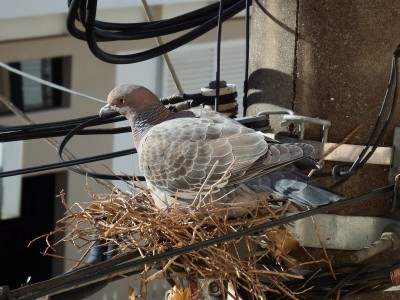
Call 0333 567 2020 for advice and quotes or contact us online
What bird control methods can be used in cities like London?
London is a vibrant and bustling city, with a population of over 9.5 million people and serves as a cultural, economic, and political hub attracting millions of visitors each year. The city is renowned for its iconic landmarks, rich history, and thriving arts and culture scene. However, with a dense urban population, London also faces challenges such as pest and bird infestations, which require effective management to maintain the city's liveability.
Urban areas, such as London, are attractive habitats for pest birds because they provide a multitude of food and nesting opportunities. With a high density of people, businesses, and waste, urban environments offer an abundant food source for birds. Additionally, urban buildings, bridges, and other structures provide ample nesting and roosting opportunities for birds.
This combination of plentiful food sources and safe shelter makes urban areas very attractive to many bird species, including those that are considered pests, such as pigeons and gulls. As such, effective bird control in urban areas is essential to protect public health and prevent damage to infrastructure and buildings.
 What problems do pest birds cause in London?
What problems do pest birds cause in London?
Pest birds in urban areas can become quite a nuisance, from damaging buildings and structures to posing a health risk to residents. Bird droppings and debris can accumulate on buildings and other structures, leading to unsightly stains and corrosion. Also, a build-up of bird droppings on pavements and footpaths can create slip hazards for pedestrians. This can result in expensive repairs and replacements, impacting the aesthetics and public safety of the urban environment.
Pest birds are also known to carry diseases that can be transmitted to humans, which can be a significant public health concern. Not to mention the noisy and aggressive behaviour of some pest birds, such as seagulls, can be very scary, putting off potential customers from visiting businesses or dining in outdoor areas.
Bird control solutions for urban areas
Bird spikes: These are a humane bird deterrent using plastic or metal spikes that are attached to ledges, roofs, and other surfaces. They act as a physical barrier without hurting the birds to prevent them from landing, roosting, or nesting on buildings.
Bird netting: Bird netting is another humane physical barrier to birds. Netting can be installed over balconies, rooftops, and large areas to prevent birds from nesting and accessing areas. The netting is made from a durable material that is designed to withstand harsh weather conditions and prevent birds from getting through.
Bird wire: Another popular method of bird control in cities is Bird wire, it involves a system of steel springs and wires, fixed between pillars. The spring-tensioned post and wires can be fixed to ledges, roofs, and pipes, creating an unstable landing space that discourages pest birds from landing.
Bird repellent gel: Bird repellent gel is visual bird deterrent; it is a relatively new method of bird control. To the birds, the gel gives off ultraviolet light, which appears to them as flames, birds avoid the flames they see from the gel and move to a safer location. As well as being a visual deterrent, to alters birds’ behaviour further, bird repellent gel is made from natural oils’ which both smell and taste repugnant to the birds.
If you're looking for effective and humane bird control solutions in London, our expert team can help. Our London bird control team are specialists at dealing with pest birds in urban areas.
For further advice and information on any type of pest control, or to book an initial survey in London, call us on 0333 567 2020, or contact us today.
Author: NBC Environment/Orkin






















